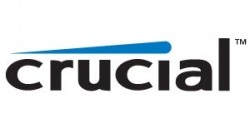 The SSD market has really taken off recently with increasingly faster drives with higher capacities being released all of the time. There has been one main problem with the entire SSD market since the beginning though, and that is cost. Even with prices continually dropping to slightly more reasonable levels, there are only a small handful of drives available for the $1 per GB price range.
The SSD market has really taken off recently with increasingly faster drives with higher capacities being released all of the time. There has been one main problem with the entire SSD market since the beginning though, and that is cost. Even with prices continually dropping to slightly more reasonable levels, there are only a small handful of drives available for the $1 per GB price range.
Today we are reviewing the Crucial Adrenaline, a solid state cache drive. The idea behind this drive is that you can plug it in to your existing system in tandem with your hard drive and achieve near-SSD level performance. So in theory, you get the blazing fast speed of an SSD while maintaining the massive storage and cheap prices of a hard drive. Read on to find out if it will live up to its claim.
 |
–~~~~~~~~~~~~–
Features
SSD-like performance. Hard drive capacity.
While traditional hard drives offer high capacities to store a lot of content, solid state drives provide enhanced performance to access that content much more quickly. By using solid state technology as a cache for your existing hard drive, Crucial Adrenaline offers the best of both worlds: SSD-like performance without compromising the capacity of your hard drive.
How Crucial Adrenaline works.
A simple upgrade that allows you to keep your existing hard drive, Crucial Adrenaline comprises a 50GB Crucial m4 SSD, 3.5″ adapter bracket, SATA cable, and Dataplex™ caching software**. The solution intelligently places, or “caches”, the most frequently needed files (active data) on the SSD and leaves less frequently used files (inactive data) on the hard drive. The result? Faster application load times and increased boot speed.
An easy upgrade.
Because Crucial Adrenaline works with your existing hard drive, there’s no need to transfer files or programs. Simply connect the SSD to your motherboard with a standard SATA cable, start the computer, and then install the Dataplex caching software. Once the software is installed and the system has been rebooted, the software seamlessly integrates your existing hard drive and Crucial Adrenaline into a single storage system. Fully automated, the software then runs in the background and requires no user management.
Quality you can depend on.
Crucial is a trusted name when it comes to SSDs, and that’s no coincidence. As a brand of Micron, a leading innovator and manufacturer of SSDs, we work with our engineers to refine them, test them, and back them with terrific service, support, and a limited three year warranty.
Packaging
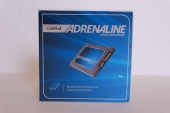 |
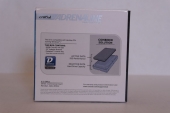 |
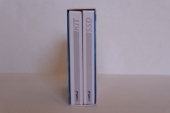 |
The Adrenaline comes in simple packaging. No fancy graphics or bold claims plastered on the box, just a little information on how the system works on the back.
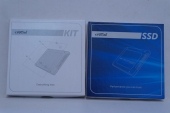 |
 |
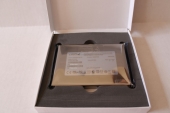 |
Inside the outer sleeve are two smaller boxes, one containing the drive itself and the other holding the mounting bracket and SATA cable.
The drive came securely surrounded by dense foam. Under the drive is your Dataplex software license key
–~~~~~~~~~~~~–
Closer Look
 |
 |
The Adrenaline is based off of the Crucial m4 design, using the same controller and NAND memory. Crucial claims read and write speeds of 500MB/s and 95MB/s respectively as well, identical to those of the 64GB m4. However, these numbers will mean nothing if the drive is being held back by the caching software so only testing will tell.
Installation
 |
 |
 |
To install the drive, Crucial provides a 2.5″ to 3.5″ adapter to fit into a standard hard drive bay as well as a 90 degree elbow SATA cable.
I installed the drive into my NZXT Phantom 410 with no issues. Just screw the drive to the bracket with the included screws, plug it in, and you are set.
Dataplex Software
 |
 |
 |
 |
The Dataplex software, like the installation of the drive itself, couldn’t have been any easier. Start it up, enter your license key, choose the SSD cache and your target drive, reboot and you are finished. You don’t have to worry about formatting or anything. From start to finish it only took maybe 2 minutes.
 |
 |
What is kind of interesting here is that in the left picture we see my hard drive and the SSD before the software is installed. In the right picture, after Dataplex was installed, the SSD disappears. Even your computer thinks its just one drive!
 Testing the Adrenaline was fairly simple. I did 3 runs of each task with just the hard drive installed, then I installed the Adrenaline with the Dataplex software and recorded 3 runs. In order to get maximum performance and the kind of numbers you could expect day in and day out, I would run each test 4-5 times before I recorded the times. This is because the caching software works by caching tasks that you perform frequently. For example, if you were to install the drive and boot Windows, it would be just as slow as a standard hard drive. But if you were to then reboot, the boot time would be much faster, and increasingly faster each time until it reaches max performance, which I found to be somewhere around the 3rd or 4th time.
Testing the Adrenaline was fairly simple. I did 3 runs of each task with just the hard drive installed, then I installed the Adrenaline with the Dataplex software and recorded 3 runs. In order to get maximum performance and the kind of numbers you could expect day in and day out, I would run each test 4-5 times before I recorded the times. This is because the caching software works by caching tasks that you perform frequently. For example, if you were to install the drive and boot Windows, it would be just as slow as a standard hard drive. But if you were to then reboot, the boot time would be much faster, and increasingly faster each time until it reaches max performance, which I found to be somewhere around the 3rd or 4th time.
Windows Startup
 |
Windows boot time is the go to benchmark for any hard drive or SSD because it more than anything is what is going to make your computer feel fast. To do this test I simply hit the power button and measured how long it took to hit the desktop.
Here we see that the Adrenaline significantly decreased boot time from about 44 seconds to around 27 seconds. This difference is very noticeable and even more impressive when you consider that about 15 seconds of that is the motherboard running its checks.
Firefox
 |
Once my computer is booted, generally the very first thing I do is open Firefox. Start up time for that went from 6.23 sec. to 2.03 sec. Keep in mind that this is the first start per boot as every time after that is going to be almost instant even with just a hard drive. While 4 seconds doesn’t sound like a lot, it really is the difference between seemingly slow and very quick.
CPU-Z
 |
I thought I would try out CPU-Z start time because I felt that it would rely less on the hard drive so would be a good gauge for programs like it. As we see here, from clicking the icon to fully loaded was less than a second difference between the two setups as expected.
Photoshop CS5
 |
Photoshop start time is another classic benchmark for drives because it has to pull so much stored information. As expected, the Adrenaline made a massive difference, lowering start up from roughly 10 sec. to around 4.
Windows Media Player 12
 |
Windows Media Player boot time also fared much better with the cache drive, dropping from 4 seconds to just 1 second.
–~~~~~~~~~~~~–
Skyrim Savegame Load
 |
For this test I would start Skrim and load a savegame, recording the time it took from clicking the load button to being in game. This load time went from 9.63 to 6.28 seconds using the cache drive. Keep in mind that because of how the caching software works, general, random load times are probably not going to decrease significantly if at all.
RAW Conversion
 |
I threw this test in to see if having increased storage performance would have any effect on converting a RAW image to JPEG. As you can see, there was virtually no change as expected since the conversion relies more on CPU speed than storage speed.
HD Tune
 |
 |
| Hard Drive Only | Adrenaline Installed |
HD Tune is a great tool to test the performance of a drive in most cases. But for this situation, I assume the Dataplex software clashes somewhat with the utility. As you can see, with a just a hard drive on the left, performance is both better and also much more stable. As we know from the previous real-world benchmarks, adding the Adrenaline to your system certainly does not slow it down so this will not be held against it.
What we can see though is that access time dropped significantly, which is the effect you notice the most in general use.
3DMark Vantage
 |
 |
| Hard Drive Only | Adrenaline Installed |
Generally actual gaming performance is unaffected by your storage device, but I thought we would take a look and see if the Adrenaline makes any sort of difference. I just ran the first graphics test to quickly get an idea of any impact it may make and as you can see it did nothing for our fps as expected.
- Affordable
- Significantly increases speed of general tasks
- Easy to set up
- Lets you keep you regular hard drive with its full capacity and everything on it
Cons:
- Speed only increases after repeated uses of a program.
Overall, I was surprised and very pleased with the results of the Adrenaline. Crucial is marketing it as hassle-free, plug-and-play, near SSD performance and they hit the nail on the head. It could not have been easier to use. No formatting, no partitioning, no worrying about which drive to install programs. Just plug it in and your computer is faster. As far as performance goes, the aim of this drive is to make general everyday computing feel quicker, which it accomplishes. Looking at the numbers in the benchmarks is one thing but when you wake up in the morning and hit the power button on your tower, that is when you really feel the difference. Everything is ready to go much faster, programs open significantly quicker, and the system just feels more responsive.
One of my favorite things about the Adrenaline though is the fact that aside from the speed boost, nothing has changed. I don’t have to worry about which drive to install a new program like a would with a small SSD boot drive and I didn’t have to reformat and start over. Its so simple and that is why it is great. The only issue I have with it is that unlike a regular SSD, everything is not blazing fast the first time. It takes a few boot ups or programs starts for the software to recognize your habits and cache it.
At only $100, there are very few easier or cheaper ways to make such a large performance difference to your computer. I would recommend this drive to anyone who wants to make their existing computer noticeably quicker without the hassles of a small SSD or the price of a larger SSD.
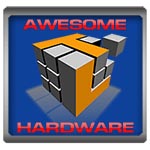
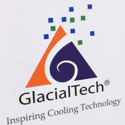
[…] Crucial Adrenaline Solid State Cache Review @ TechwareLabs […]
[…] me, and I had an excellent time. But now…back to work.TechwareLabs gets us started with the Crucial Adrenaline Solid State CacheBjorn3D taps away at the Corsair Vengeance K90 KeyboardTechReviewSource sits down with the Toshiba […]
[…] Crucial Adrenaline Solid State Cache Review @ TechwareLabs […]
[…] Crucial Adrenaline SSD @ HardwareHeaven Crucial Adrenaline SSD @ TechwareLabs OCZ Octane 512GB SSD @ Hardware […]
[…] a hard drive. Read on to find out if it will live up to its claim." Read the full review here. "Other girl's luxuries are my necessities, so buddy, […]
[…] Crucial Adrenaline Solid State Cache Review @ TechwareLabs […]
[…] Crucial Adrenaline Solid State Cache Review @ TechwareLabs […]